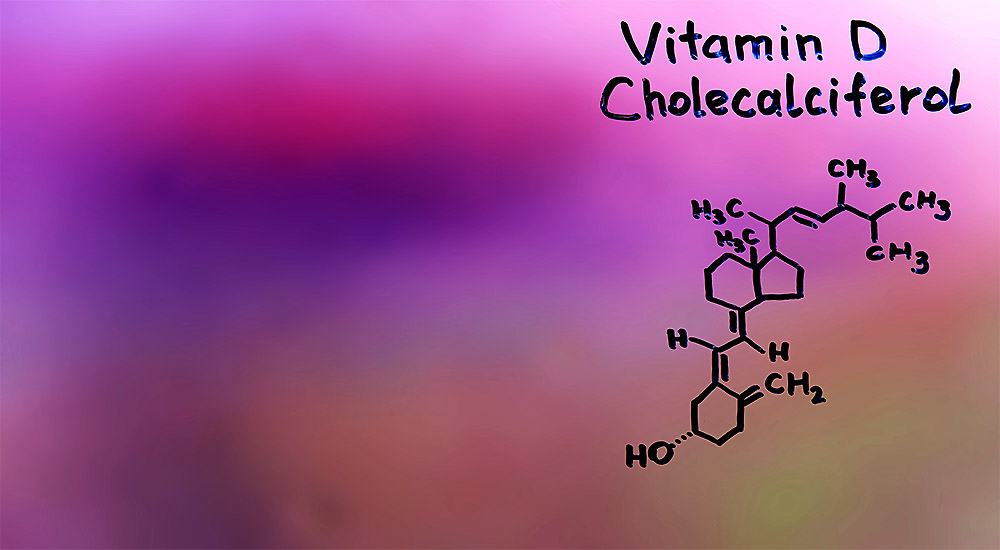Is Arsenic in Rice a Real Problem? Part 2

Arsenic: The conclusion of our two-part series
In part 1 of this blog we answered the following questions:
- What is the problem we need to face?
- Why does rice contain arsenic?
- Why do rice companies grow cancer-causing rice?
- Isn’t rice good for you?
- How much rice CAN you eat safely?
- Is there better rice?
- Children, rice, and arsenic, what do you need to know?
In this final part, we will cover strategies for eating rice safely and some good news about consuming rice. But first, let’s look at another source of arsenic you should be made aware of.
Arsenic and our drinking water
A major source of arsenic, in addition to rice, is our drinking water. Considering it is a known carcinogen, one would assume the level of arsenic allowed in our water by the FDA would be a safe one.
“Safe”, when you’re speaking of known carcinogens is defined as “one in a million”. That would mean the safety standard would not create more than one in a million extra cancer cases.
I was truly shocked to learn that allowable arsenic in bottled water is 10 parts per billion. Does that follow the one in a million safety standards? Not even close.
The allowed level of 10 parts per billion poses a risk factor of “1 in 300”! That is 3,333 times the acceptable level.
Are you angry? You should be. There’s no argument that arsenic is a carcinogen and our water is a major source of it.
Why does the FDA allow dangerous levels?
Why isn’t the level 0.2 parts per billion as it should be? Apparently it would cost too much.
Yes, you can continue to be angry about this; I know I am.
You can Google areas in the country where water meets and exceeds the FDA’s “safe levels”, but now you know those aren’t safe either unless they are minimally below 3 parts per billion.
Water Solution: reverse osmosis systems remove a great deal of the arsenic present in water.
Just be sure you change the filters often.
Foods to watch out for
Cereals such as rice Krispies, rice milk and brown rice syrup are sources of arsenic that you should be alert to. A study following children revealed that a mere ¼ cup of daily rice was enough to raise the arsenic levels in their urine 15%. If they ate an additional ¼ cup, their urine levels climbed even higher.
If you and your family try to avoid sugar, you may want to read the labels of some of your “healthy” pre-packaged treats. Rice syrup is a common sweetener used in healthier snacks but should be avoided completely.
It’s one of the reasons I started playing in the kitchen making my own healthy snack recipes. I needed more control of the ingredients. Here are a few of my favorite snack recipes:
If you’re gluten-free and rice is a staple in your diet, I understand if you’re feeling frustrated right about now. Let’s get through all the data, then I’ll let you know what I’ve been doing to replace the majority of rice in my diet.
Strategies for safest rice consumption
Which rice is best? If you’re going to enjoy a couple of servings of rice per week, there are definitely some steps you can take to minimize your arsenic exposure:
- Buy rice from California or Asia. Lundberg Farms here in California is more pro-active than most rice growers. They claim their brown jasmine and brown basmati have the lowest arsenic and they are one of the few growers actually speaking about arsenic, so they get some brownie points. Most companies ignore the problem completely.
- Short-grain rice has less arsenic than long grain. This is likely because the longest grain is grown in the southern states where the arsenic laden soil is most acute.
- Brown rice contains more arsenic, but once absorption was analyzed, there was no difference in the arsenic levels of those eating white vs. brown. So eat brown, black, or red to get the most nutrition.
- Rinse your rice well before cooking it.
- Cook your rice the way you would pasta. Instead of the classic 2 to 1 ratio of water to rice, use 10 to 1. Then, once the rice is cooked, thoroughly drain and rinse the rice before eating.
- Put some curcumin on your rice, and serve rice with foods high in antioxidants such as dark green leafy veggies, sweet potatoes, and cruciferous vegetables, to counter the ill effects of arsenic on your body’s immune system.
The Good News
Is there good news? Yes. As promised I said I would give you a way to enjoy your rice in moderation. I just reviewed 6 points above, but I wanted to expound a bit on the last point.
Since arsenic is a heavy metal known to cause cancer, it only makes sense that some of the dietary recommendations we use to avoid cancer could be helpful against arsenic as well.
Arsenic not only creates free radicals that damage your cells’ DNA, but it also damages your body’s DNA repair enzyme. It’s amazing that damage to your body’s genetic material can actually be repaired. But arsenic prevents the body’s natural repair mechanism, making it understandable why it’s a cancer-causing agent.
We can outsmart arsenic to a degree.
The spice turmeric eats up free radicals and can bind up heavy metals. And…when used in a double blind study with a placebo, the turmeric given to arsenic exposed individuals prevented damage through its strong anti-oxidant properties AND repaired the DNA enzymes destroyed by arsenic.
The turmeric, after a mere 3 months, created so much benefit that there was no difference between the turmeric treated group and those who hadn’t been exposed to any arsenic!
This is great news. It means that if you keep your antioxidant potential high, a little rice now and then is tolerable.
Those with the highest beta-carotene levels in their blood had a 99% lower risk of developing cancer caused by arsenic. That’s amazing protection!
Grassroots Movement to restore health to our rice crops
If you’re politically minded, lobby your congressman to adopt China’s standards of acceptable arsenic levels – 150 parts per billion.
It’s been estimated that if the U.S. implemented the 150 ppb safety limit, we could reduce cancer risk by as much as 23%.
It would also likely wipe out our rice crop completely because it wouldn’t meet the standard. But couldn’t companies find soil that wasn’t contaminated on which to grow their rice? Yes. Yes, they could. They’ve known about the problem for many, many decades; had they acted on it earlier they could have healthy, safe crops by now.
What steps have I taken?
As I have admitted in the video I just taped on this subject, I am guilty of “sitting on this information” for a while. The rapid change I made was to get all brown rice syrup products out of my kitchen and off the shelves here at the clinic. For a time we had protein bars that contained rice syrup as their sweetener. I immediately got those off our shelves.
However, severely limiting the ingestion of rice took a little longer. I was hoping the antioxidants found in brown, black, and red rice was enough to counteract the ill effects of the arsenic. As you have learned above, while you CAN take steps to limit your exposure, arsenic is just too dangerous to ignore its presence. Remember it’s also in the air we breathe and there’s nothing we can do about that.
What I began doing several months ago was the following:
Hot cereals changed to oatmeal and buckwheat
Pasta changed to lentil and chickpea pasta (my current favorite is Banza) – these are high in protein and very satisfying.
I roast sweet potatoes and new potatoes instead of cooking rice.
I’ve moved towards quinoa as another option. It certainly cooks a lot faster than rice.
Interestingly, I did this for a few months before I confessed to my family of 4 adults whom I cook for every night, that I made the switch. Their reaction was interesting: “Huh, I didn’t notice.”
This goes to prove that if the food tastes good, you can eliminate something without the family really noticing. At this point, I’m cooking rice maybe once per week and I follow all the recommendations I mention above.
Do you need help with your health?
We have the diagnostic and testing tools, the clinical experience, and a different medical approach to discovering the root cause of why you have the symptoms that are bothering you. As long as you are ready to make some dietary and lifestyle changes, we can help you. We will "hold your hand" through the changes, step by step, to make each step an easy one. We are located in Clearwater, FL, at 1000 S Ft Harrison, at the corner of Ft. Harrison Ave. and Magnolia St. There is plenty of parking space directly accessible from Ft Harrison. If it is not convenient for you to come to Root Cause Medical Clinic, we offer telehealth/telemedicine consultations to residents of certain states. Call us for details.
Contact us for a Consultation – Call 727-335-0400

Dr. Vikki Petersen DC. CCN
Founder of Root Cause Medical Clinic
Certified Functional Medicine Practitioner
Dr Vikki Petersen is a public speaker, author of two books, several eBooks and creates cutting edge content for her YouTube community. Dr Vikki is committed to bringing Root Cause Medicine and its unique approach to restoring health naturally to the world.
Ask a Doctor
Have a health concern you'd like to speak with a doctor about? Or just want clarity on a subject? Ask Us!
Featured Articles
Popular Stories
References:
Grateful acknowledgment to Dr. Greger and his research team at nutritionfacts.org for their tireless commitment to unveiling the best in clinical nutrition research.
- Kim HS, et al. An Overview of Carcinogenic Heavy Metal: Molecular Toxicity Mechanism and Prevention. Journal of Cancer Prevention. 2015 Dec;20(4):232-40.
- Gleason K, et al. Contaminated turmeric is a potential source of lead exposure for children in rural Bangladesh. Journal Environmental Public Health. 2014;2014:730636.
- García-Niño WR, et al. Protective effect of curcumin against heavy metals-induced liver damage. Food Chem Toxicology Journal. 2014 Jul;69:182-201.
- Biswas J, et al. Curcumin protects DNA damage in a chronically arsenic-exposed population of West Bengal. Human Experimental Toxicology. 2010 Jun;29(6):513-24.
- Roy M, et al. Curcumin prevents DNA damage and enhances the repair potential in a chronically arsenic-exposed human population in West Bengal, India. European Journal of Cancer Prevention. 2011 Mar;20(2):123-31.


